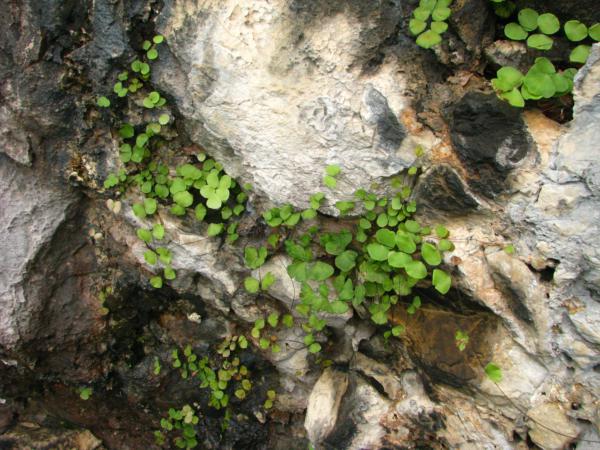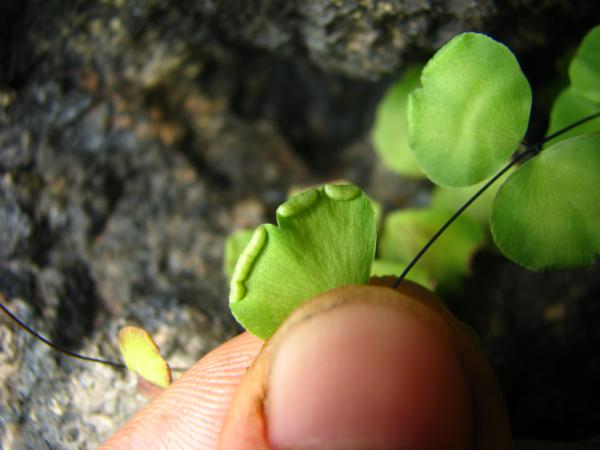
Adiantum capillus-junonis Rupr.
Family
Pteridaceae, subfamily Vittarioideae
Nomenclature
Adiantum capillus-junonis Rupr., Dist. Crypt. Vasc. Ross. 49. 1845; Boonkerd & Pollwatn, ScienceAsia 37: 370–372. 2011.
Description
Description from Boonkerd & Pollwatn, ScienceAsia 37: 370–372. 2011.
Rhizomes short erect; covered with brown lanceolate scales, the scales 4–5.4 mm long, margin glabrous. Stipes 3.4–8.7 cm long, 0.12–0.54 mm in diam., deep-castaneous and polished, scales like those on rhizome, smooth upwards. Laminae simply pinnate, oblong-lanceolate, 3.5–13 by 3.5–5.5 cm; pinnae stipitate, 1–3 pairs, lateral pinnae opposite or subopposite; stalks 0.1–0.5 cm, articulated to pinnae at base of pinnae, persistent; lower pairs of pinnae 1.2–2.1 by 1.5–2.5 cm; pinnae circular to obtriangular, base broad cuneate to rounded, basal edges entire, upper margins rounded; fertile pinnae with 2–5 shallow sinuses, slightly denticulate to entire on sterile parts; sterile pinnae slightly denticulate to entire on upper margins; upper pinnae and terminal pinnae similar; softly herbaceous or membranous, glabrous on both surfaces; veins dichotomous, prominent on both sides. Sori 2–5, at margin of pinnae, reflexed soral flaps oblong to reniform, about 1.2 mm broad, up to 3 mm long. Sporangia on short stalk, 1/3 as long as the capsule; capsule ca. 350 micrometres by 275 micrometres, with 28–30 indurated annulus cells. Spores trilete , mostly 56–62 micrometres diam.
Distribution in Thailand
NORTH-EASTERN: Phetchabun, Loei.
Wider Distribution
Japan, China, Taiwan, Thailand.
Ecology
On wet limestone rock walls in semishade, 600–900 m.
Similar species
Adiantum erylliae C.Chr. & Tardieu
Proposed IUCN Conservation Assessment
Least Concern (LC). This species is widespread and not under any known threats.
Habit
Habit
Sori
Site hosted by the Royal Botanic Garden Edinburgh. Content managed by Stuart Lindsay, Gardens by the Bay, Singapore and David Middleton, Singapore Botanic Gardens. Last updated 24 January 2012


